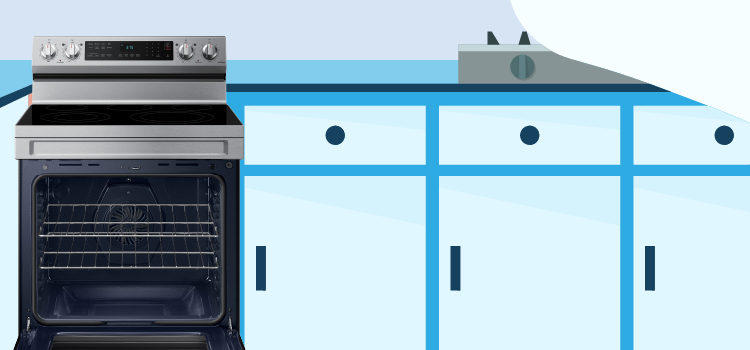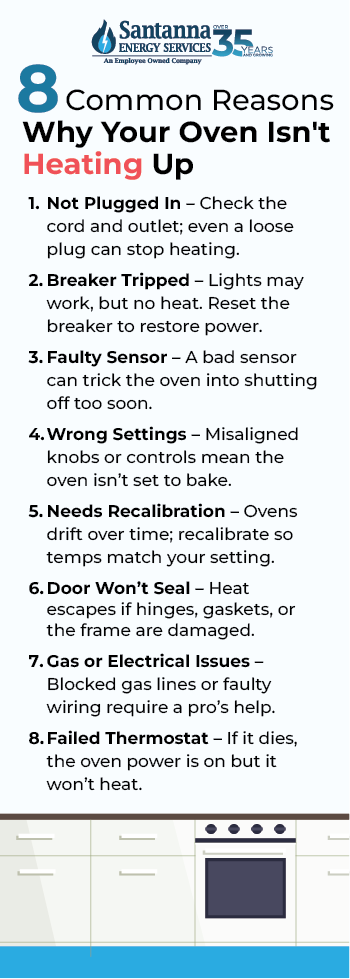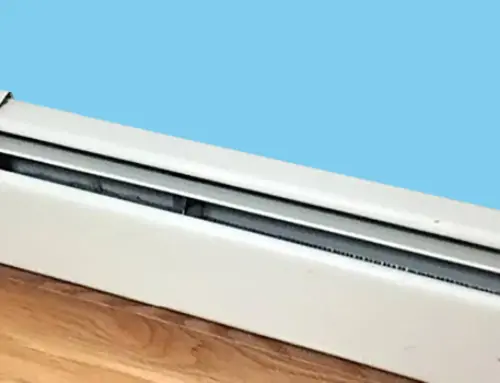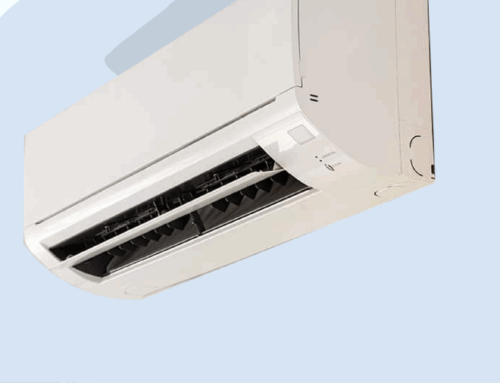Why Is My Oven Not Heating Up? Causes and Energy-Saving Tips
by Tyler Castle
19.9 min read

Imagine this. It's Sunday evening, the roast is prepped, and the family is gathered around waiting for dinner. You turn on the oven, but after twenty minutes, the oven is still cold. Instead of the comforting smell of food, you are met with frustration. Your oven is not heating up!
This happens more often than you might think. And when it does, it is more than just an inconvenience. A malfunctioning oven can quietly waste electricity or gas, raising your energy costs while leaving you with an unfinished meal.
The good news is that most oven heating issues come down to a few common causes, and many of them are safe to check at home. In this guide, we will walk through the reasons your oven may not be heating, what you can look for yourself, and when it makes sense to call a professional, all with an eye on keeping your home energy efficient.
Key Points of This Article:
- Common oven heating problems often come from failed igniters, burned-out heating elements, or faulty sensors, which prevent the oven from reaching the desired temperature.
- If your oven turns on but stays cold, the part that generates heat is failing.
- Repair is worth it for ovens under 10 years old with minor issues like a bad element or igniter.
- The average cost of oven repair for heating issues ranges from $130 to $310.
Electric vs. Gas Ovens: Why They Fail in Different Ways
Before you can figure out why your oven is not heating up, it helps to know whether you have an electric or gas model. Both types are common in homes across the country, but they work very differently; that's why they tend to break down in different ways.
Electric ovens rely on electricity to power metal coils that heat the oven cavity. When something goes wrong, it is usually an electrical issue. For example, if a heating element is burned out or cracked, the oven may still turn on but stay cold or heat unevenly.
Similarly, a faulty temperature sensor or thermostat can trick the oven into thinking it has already reached the right temperature, causing it to shut off too soon. Also, a tripped breaker, blown fuse, or loose wiring connection may cut power to the elements, even though the oven light or fan still works.
Gas ovens, on the other hand, use a flame to produce heat. They depend on a steady supply of fuel and a working ignition system. In this case, if the igniter is weak or broken, the burner will not light, leaving the oven cold.
Similarly, if the gas line or valve is restricted, fuel may not reach the oven even if the stovetop burners are working fine.
If you know whether your oven is gas or electric, you can narrow down the possible problems much faster.
You can tell if your oven is gas or electric by checking the power source. Gas ovens have a visible gas line and burners with flames, while electric ovens plug into a large electrical outlet and often have coil or smooth-top heating elements.
Why Is My Oven Not Heating Up? Your Top 8 Most Common Reasons
There are several reasons why your oven is turning on but not heating up, ranging from simple oversights to parts that need replacement. The good news is that most of these issues are well-known, and you can often spot early warning signs before deciding if a repair is needed.
Here are the most common causes why your electric and gas ovens are not heating up:
1. The Oven Is Not Plugged In
It may sound too simple, but sometimes the oven has been unplugged during cleaning or moved slightly so the plug is loose, or the button on your oven is sticky. It happens! If your oven is not heating at all, always start by checking that the power cord is fully plugged into a working outlet or that your oven function is on.
2. The Circuit Breaker Is Tripped
Electric ovens use a lot of power and need a full 240-volt connection. If one side of the breaker trips, lights and fans may still work, but the heating elements will not. Check your breaker box and reset the switch if needed.
Even though gas ovens use gas for cooking, they still need electricity for things like the igniter, lights, and controls. If the breaker gets tripped, your oven won’t turn on or heat up until the power is restored.
3. The Temperature Sensor Is Faulty
Ovens have a small metal rod, usually at the back, that measures heat. If it is bent, loose, or malfunctioning, the oven may shut off too soon or fail to heat properly because it thinks it is already at the right temperature.
4. The Thermostat Knob or Control Setting Is Off
On some ovens, the knob or selector switch may not line up exactly with the internal control. If it is misaligned, the oven may not actually be set to bake or heat at the right temperature.
5. The Oven Needs Recalibration
Regardless of your oven type, over time, ovens can “drift” and heat less accurately than the setting. Many models allow recalibration through the control panel or a manual adjustment. This ensures the temperature you set matches the heat inside.
6. The Oven Door Will Not Close Properly
Simple, but something you can’t ignore. If the door does not seal tightly, heat escapes, and the oven will struggle to reach or hold temperature. A broken hinge, bent frame, or worn gasket can all cause this problem.
7. The Gas Line and Electrical Issues
For gas ovens, a blocked, restricted, or faulty gas line prevents the burner from getting enough fuel to heat. If you suspect this problem, do not attempt to repair it yourself. Always call a licensed professional.
For electric ovens, electrical issues like faulty wiring or a damaged heating element can stop the oven from heating properly. If you’ve already checked your breaker box and the problem continues, it’s best to contact a qualified technician to safely diagnose and repair the issue.
8. The Thermostat or Selector Switch Has Failed
The thermostat tells the oven when to turn on and how hot to get. If it stops working, the oven may power on but never actually heat. This repair often requires a technician, especially on modern ovens with digital controls.

Why Is My Electric Oven Not Heating Up?
Electric ovens work by sending power to coils that generate and regulate heat, and if any part of that system fails, your oven may switch on but never get hot enough to cook your food properly. Here are the most common reasons an electric oven stops heating:
1. Heating Elements (Bake and Broil)
These are the visible coils inside the oven. If they burn out or crack, your oven may turn on but stay cold or only heat unevenly. To troubleshoot this issue, turn the oven on and look for the bake or broil element to start glowing red. If it stays dark or looks damaged, it likely needs to be replaced.
Replacing a heating element on your electric oven isn’t an easy DIY project, so be sure to have a professional perform this task.
2. Temperature Sensor or Thermostat
This sensor keeps track of the oven’s internal temperature and tells the heating elements when to turn on and off. If it malfunctions, the oven may think it’s hot enough and shut off too early, leaving your food undercooked.
To test an oven temperature sensor, disconnect it from the oven, then use a multimeter set to ohms to measure resistance across its terminals. At room temperature, it should read between 1,000 and 1,100 ohms. If the reading is significantly outside this range, the sensor is likely faulty and should be replaced.
3. Circuit Breakers or Wiring
Electric ovens rely on steady power, and a tripped breaker, blown fuse, or loose wiring can cut off electricity to the oven or specific heating elements.
To troubleshoot this issue, check your home’s breaker box to see if the oven’s breaker has tripped. Reset it if needed. If the breaker keeps tripping, call a professional to check for electrical problems.
4. Control Board Issues
Modern ovens use an electronic control board as the “brain” to send signals to the heating elements. If it fails, the oven may not heat at all, or certain functions like broil or bake won’t work.
To get this going again, it’s best to connect with a professional to conduct a professional diagnosis of your control board.
Why Is My Gas Oven Not Heating Up?
If you’re dealing with a gas oven not heating up, the issue often comes down to problems with ignition or fuel supply. Gas ovens work by lighting a flame inside the oven cavity, and if any part of that process fails, the oven may turn on but never reach the temperature you set.
Here are the most common reasons a gas oven stops heating:
1. Igniter problems
The igniter is what lights the gas. Over time, it can weaken and fail to spark or glow hot enough to start the flame. This is one of the most common reasons a gas oven will not heat.
To troubleshoot this problem, turn on the oven and look for the igniter to glow or spark. If you don’t see it glow after a minute or so, or you hear clicks but no flame, the igniter may need replacement.
2. Gas supply issues
If the oven is not getting enough gas due to a closed valve, clogged line, or faulty regulator, the burner will not light. To troubleshoot this issue, first make sure the gas valve to the oven is open.
If other gas appliances in your home also aren’t working, contact your gas utility right away; this is a bigger issue that goes beyond your oven. Do not attempt to clean or repair gas lines yourself; call a licensed professional.
3. Thermostat or sensor failure
Just like electric ovens, gas ovens rely on sensors to control temperature. A bad sensor can prevent the oven from staying hot.
To test the thermostat sensor on your gas oven, use a multimeter and an inexpensive oven thermometer to compare the reading inside with the set temperature. If there’s a big difference, the thermostat or sensor may need adjustment or replacement by a technician.
4. Safety valves or control board
Modern gas ovens have safety valves that only open when the igniter is working properly. If either fails, the oven will not heat.
If the igniter seems to glow but there’s still no flame, the safety valve could be stuck or failing. Because these parts involve both gas and electricity, contact a qualified repair professional for safe diagnosis.
Why Is My Oven Turning On But Not Heating Up?
When your oven powers on but never gets hot, it usually means that electricity or gas is reaching the appliance, but the part responsible for creating heat is not doing its job. This can be one of the most frustrating issues because everything looks normal at first. The clock works, the light comes on, and the fan may even run, yet your food stays uncooked.
For electric ovens, this often points to a problem with how power is being delivered to the heating element. A partially tripped breaker, a damaged wire, or a faulty control board can all prevent the oven from sending enough electricity to make the coil glow.
For gas ovens, the issue is usually with the igniter not getting hot enough to open the safety valve, so no flame appears even though the oven seems to be on.
It’s important to understand that this is not just an inconvenience. When an oven is running without producing heat, it is still pulling electricity or gas. That wasted energy adds up on your bill while giving you no cooking results in return.
In gas models, repeated failed ignition attempts can also allow unburned gas to build up, which poses a safety concern.
If your oven turns on but is not heating up, it’s a clear sign that something deeper is wrong. This is not an issue to ignore, since it can quietly waste energy, drive up costs, and in the case of gas ovens, create potential safety risks. Having the problem diagnosed and fixed quickly helps protect your wallet, your meals, and your home.
More Tips and Tricks on How to Fix an Oven That Won’t Heat Up
The first step in fixing an oven that will not heat is figuring out whether the problem is something simple you can check yourself or something that requires tools and technical know-how. Here’s how:
Fixing an Electric Oven That Won’t Heat
If your electric oven turns on but does not heat, start here:
- Check the circuit breaker: Electric ovens run on 240 volts. If only one side of the breaker trips, the oven may power on, but the heating elements won’t heat. Resetting the breaker can sometimes solve the issue.
- Inspect the heating elements: The bake and broil coils should glow red when working. If they stay dark, look cracked, or have burn spots, they may need replacement.
- Review oven settings: Sometimes the oven is on a “Delay Start” or “Keep Warm” mode instead of “Bake.” Double-check your controls before assuming something major is broken.
Fixing a Gas Oven That Won’t Heat
Gas ovens heat differently, and their most common problems are fuel or ignition related:
- Check the gas supply: Confirm that the shutoff valve behind the oven is open and that gas is flowing. Even if the stovetop works, the oven’s line may be blocked or restricted.
- Look at the igniter: When you turn the oven on, the igniter should glow (glow bar type) or click (spark type). If it does not, or glows weakly without lighting the burner, it likely needs replacement.
- Double-check settings: Ensure the oven is set to the correct temperature for “Bake” or “Broil”. Misaligned knobs or digital settings are an easy but overlooked cause.
While these simple checks are generally safe, any repair that involves gas lines, electrical wiring, or internal oven parts should be left to a qualified professional. Attempting advanced DIY fixes can be unsafe and may cause more damage.
Should You Repair or Replace a Broken Oven?
When you find yourself with an oven that is not working, the big question becomes, should you repair or replace it? The answer usually depends on the age of the appliance, the type of problem, and the overall condition of the unit.
In many cases, repair is worth it if the oven is under 10 years old, the issue is minor, such as a bad heating element or a faulty igniter, and the rest of the appliance is still in good shape.
On the other hand, replacement often makes more sense if the oven is more than 15 or 16 years old, which is about the typical lifespan for most models, if the repair involves costly parts like the control board, or if you have already dealt with multiple breakdowns in recent years. Many homeowners also choose replacement when they want better energy efficiency, since modern ENERGY STAR ovens use less energy and hold heat more effectively.
It is also important to remember that even a simple repair can be risky, as gas lines and high-voltage electrical components can be dangerous to handle. If you are ever unsure, it is always best to call a professional to assess the situation before investing in parts or trying a DIY fix.
How Much Does It Cost to Fix an Oven That Won’t Heat Up?
On average, repairing an oven that will not heat usually costs between $130 and $310. The final price can swing up or down depending on three main things:
- The Type of Oven You have
Gas ovens tend to be a little more expensive to repair than electric ones because they involve more safety parts like igniters and valves. - The Part That Needs Fixing
A burned-out heating element is one of the simplest and least expensive repairs. On the other hand, if the control board or thermostat fails, the cost will be higher because the parts are more complex. - The Level of Labor Involved
Some parts are easy to reach and replace, while others require pulling the oven apart. Labor time is a big part of what drives the price up.
When To Call a Professional for an Oven That’s Not Heating
Some oven problems go beyond simple fixes and require expert attention. Below are the signs it’s time to call a professional:
- Gas Leaks or Strong Odors: If you smell gas and the oven will not light, shut it off immediately, ventilate the area, and call your gas utility or a licensed repair technician.
- Electrical Hazards: Repeatedly tripped breakers, sparking, or burnt wiring smells should only be handled by a qualified electrician or appliance repair tech.
- Igniter or Control Board Failures: These parts require tools, testing, and replacement that are not DIY-friendly.
- Oven Not Heating After Basic Checks: If you’ve reset the breaker, confirmed the gas supply, and inspected elements or sensors but the oven still won’t heat, it is time for professional help.
Safety should always come first. If at any point you feel uncertain, stop troubleshooting and contact a licensed technician. Professional repairs ensure the work is done correctly and safely.
How Oven Problems Impact Your Energy Bill
When an oven is not working properly, it often ends up using more energy than it should. For instance, if your oven takes much longer than usual to preheat, a weak heating element or igniter may be forcing it to run longer, burning extra electricity or gas before you even start cooking.
A faulty temperature sensor can also cause the oven to cycle on and off irregularly, drawing power without cooking food evenly. Even something as simple as a worn door seal can let heat escape, which makes the oven work harder to maintain its temperature.
To put this into perspective, imagine an electric oven that normally takes 10 minutes to preheat now needs 25 minutes because of a weak element. If you bake three times a week, that extra 15 minutes of wasted heating could add up to several additional hours of energy use each month.
Hypothetically, this might increase your bill by a few dollars each cycle. Of course, the exact impact depends on your oven type, how often you cook, and your local energy rates. Fixing these problems quickly or upgrading to a newer, more efficient oven can help keep both your meals and your monthly costs under control.
Our Recommended Tips for Energy-Efficient Oven Use
Using your oven more efficiently not only saves energy but can also help keep your monthly bills lower. Here are some smart habits you can start today:
- Keep The Oven Door Closed While Cooking
Every time you open the door, heat escapes, and the oven has to work harder to get back to temperature. Use the light and window to check on food instead. - Cook in Batches
If you’re already heating the oven, prepare multiple dishes at once or back-to-back. This way you take advantage of the heat you’ve already paid for. - Use The Convection Setting If Available
Convection ovens circulate hot air, which cooks food more evenly and often at a lower temperature, saving time and energy. - Check And Replace The Door Seal
A tight gasket keeps heat inside. If it’s cracked or worn, the oven leaks energy and takes longer to cook. - Match Cookware To The Meal
Use pans that fit the food and place them in the center rack for the most efficient, even cooking. - Preheat Only When Necessary
Many foods, like casseroles or roasted vegetables, don’t need a fully preheated oven. Skipping or shortening preheat saves minutes of wasted energy. - Turn The Oven Off Early
Ovens stay hot even after you switch them off. For foods that don’t need exact timing, turn the oven off 5–10 minutes before the timer ends and let the residual heat finish the job. - Use Glass or Ceramic Bakeware
These materials hold heat better than thin metal pans, allowing you to lower the cooking temperature by about 25°F without affecting cook times. - Keep The Oven Clean
Built-up grease and food residue absorb heat and block airflow, forcing the oven to run longer. A clean oven heats up faster and cooks more evenly. - Pair With Smaller Appliances When Appropriate
For quick tasks like reheating leftovers or toasting bread, use a microwave, toaster oven, or air fryer. These use far less energy than firing up the full oven.
Small habits like these can reduce how long your oven runs and how much power or gas it uses. And when paired with Unlimited Energy, you can keep your home’s energy supply charges* more predictable even during busy cooking seasons.
FAQs
Can I replace the oven heating element myself?
Yes, many homeowners can replace a bake or broil element in an electric oven using basic tools, since they are usually accessible and plug into connectors. However, always turn off the power at the breaker first. If you are not confident working with electrical wiring, it is best to call a professional.
Is it safe to use an oven that isn’t heating properly?
Generally, no. If you notice repeated failures, gas smells, or electrical issues, stop using the oven until it is inspected.
How do I know if my oven problem is a gas leak or just an igniter issue?
If the igniter glows weakly or doesn’t light the burner, it’s usually an igniter issue. If you smell raw gas that doesn’t dissipate quickly, that may be a leak—shut off the oven, ventilate the room, and call your gas utility right away.
Can an oven not heating be caused by a power surge?
Yes. Power surges can damage sensitive electronics like control boards and sensors, which may prevent the oven from heating even if the lights and fans still work.
How often should I clean oven cavities, filters, and seals?
Wipe down spills after each use to prevent buildup. A deeper clean is recommended every three months. Check and clean or replace filters and seals as needed—damaged seals can waste heat and energy.
Can you manually ignite a gas oven?
Most modern gas ovens with electronic igniters cannot be lit manually, since safety valves won’t release gas without the igniter working. Older ovens with standing pilot lights sometimes allow manual ignition, but you should check your owner’s manual first.
A cold oven can disrupt your dinner plans, but most heating issues have common causes, such as a bad heating element, a weak igniter, or a worn door seal. Simple checks can often point to the problem, and a professional can handle the rest. Knowing when to troubleshoot and when to call for help keeps your home safe, your meals on track, and your energy from being wasted.
An oven that struggles to heat can also raise your energy costs. Longer preheat times, heat loss, and failed heating cycles all use more electricity or gas without giving you the results you need.
At Santanna, we understand that you cannot always control when appliances break down. What you can control is how predictable your supply charges are each month. With our Unlimited Energy plan, you pay one flat supply charge* every month, no matter how much you use. Even if your oven is working harder than it should, the supply portion of your bill stays the same.
* Restrictions apply. Enrollment based upon program eligibility. Customers using more than 125% of normal monthly usage as determined by Santanna may be required to switch plans.
Tyler is an experienced energy professional, having worked for Santanna Energy Services, for the past four years. He is passionate about renewable energy and believes that diversifying the energy grid is the key to a sustainable future. Tyler is dedicated to supplying consumers with the best possible energy solutions and works diligently to make sure that Santanna can deliver the highest quality service.







